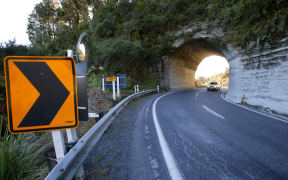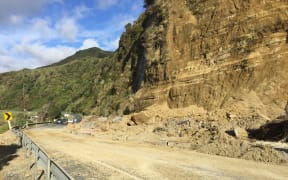The reintroduction of kōkako into pristine NorthTaranaki bush is being jeopardised by a proposed upgrade to State Highway 3, conservationists say.
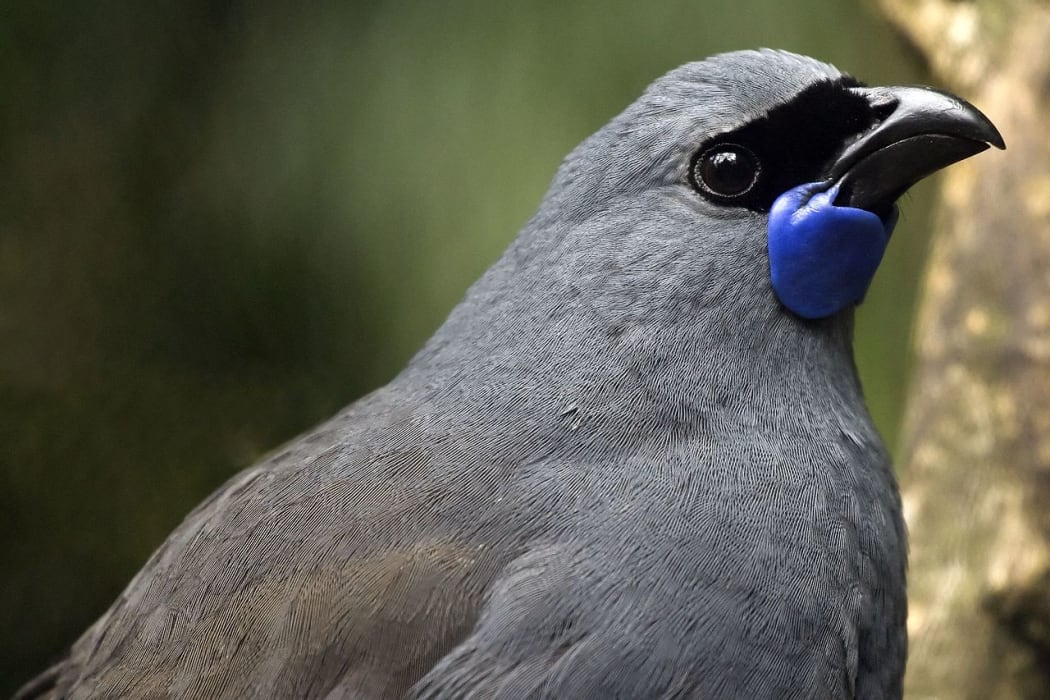
A North Island Kōkako. Conservationists say a proposed bypass in Taranaki could jeopardise the bird's reintroduction to the area. Photo: (Matt Binns Creative Commons Attribution 2.0 Generic)
The last kōkako was rescued from the Whitecliffs area in 1999 and put into a breeding programme.
Since then an intensive Māori-led pest control regime has been underway, aimed at securing the bird's return.
But now the New Zealand Transport Agency (NZTA) is about to upgrade 58km of road, through the Mt Messenger and Awakino Gorge sections of SH3.
The $135 million project includes two proposals to bypass Mt Messenger.
The agency's preferred route involves a 6.4km bypass that crosses the Parininihi conservation area, while a shorter, more direct route, which is popular with the transport lobby, would cut the reserve almost in two.
Tiaki Te Mauri O Parininihi Trust had been driving the pest control programme in partnership with the Department of Conservation (DOC).
Trustee Carla White said the kōkako was considered a taonga species by the Ngāti Tama iwi, whose land the reserve was in.
"Once upon a time they were prolific in our forests and ... it is a very iconic species for us, in that it's a friendly bird, and one that you hear.
"So when it was gone you got this sense of the silence of the forest."
The Parininihi conservation area was 1300 hectares, with plans to expand the management area to 2000ha, the minimum size necessary for a self-sustaining population of kōkako.
Ms White feared DOC would not give permission to relocate kōkako to the reserve next year as planned if a highway was going to divide it.
"Because they're not strong flyers - they glide from high point to low point to travel - you couldn't either guarantee that they would move from one side of the road to the other to use the whole area or that they could do that safely."
Either bypass option would expose the birds to significant and ongoing noise and air pollution as well as disruption during the construction phase, Ms White said.
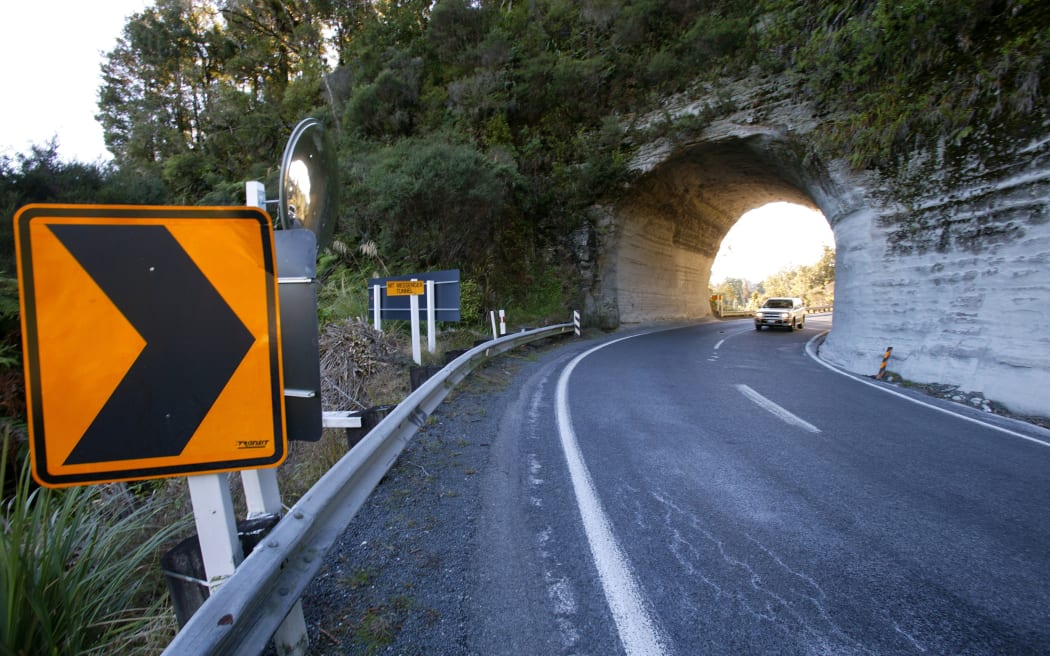
The road tunnel on Mt Messenger. Photo: Supplied / Rob Tucker, Venture Taranaki
The trust favoured upgrading the existing road, she said.
DOC said translocation initiatives were very complex and required suitable habitat, and the ability of the land managers to maintain pest control.
It had not yet seen any ecological impact assessments for the Mt Messenger options, so it could not say what impact they might have on the proposed kōkako translocation.
Taranaki Conservationists coordinator Sam Mortensen, who organises volunteers to help with pest control in the reserve, said it was an unspoilt paradise that ran unbroken from the white cliffs at the sea to dense inland bush.
"It's amazing, it's like nothing you've ever seen before. It's a beautiful forest, a perfect example of a lowland coastal ecosystem and there's birds everywhere," she said.
"It's quiet, you can't hear a car for miles and bellbirds and tui flit between the rewarewa forest. It's just out of this world."
Discussion around the bypass options had so far ignored the conservation values of the area, Ms Mortensen said.
"Any development in that area should be very carefully considered. It is a very dangerous piece of road and there's obviously a lot of benefits to making access to our region easier, but it is a very very special piece of our country that we should be thinking very carefully about how we go about potentially damaging it."
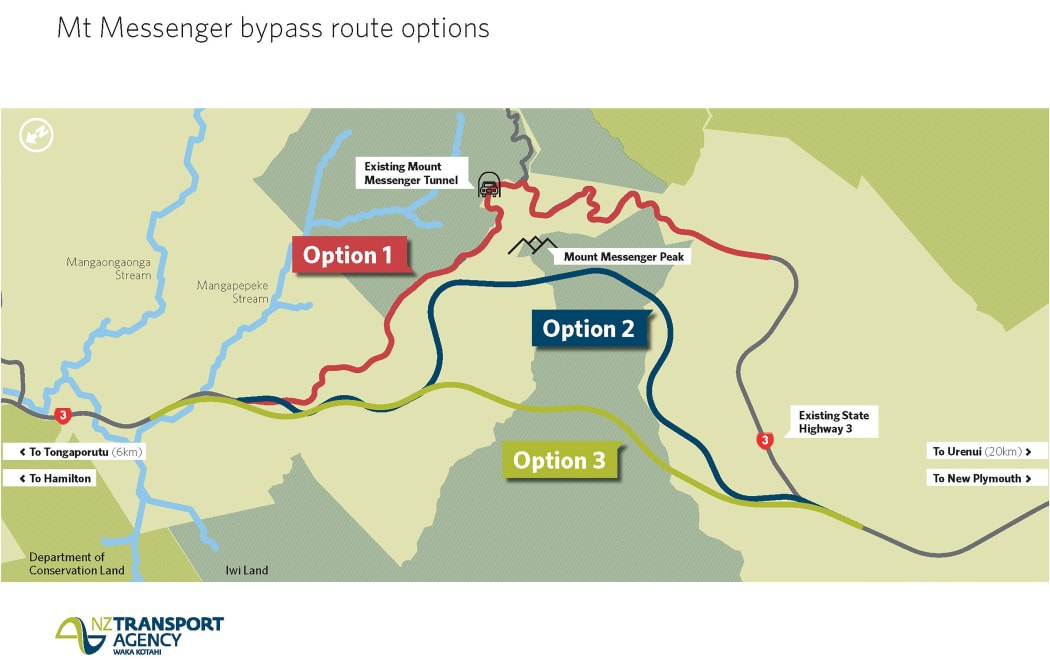
Some of the proposed new routes for SH3. Photo: Supplied
NZTA regional highway manager Ross I'Anson said ecological and cultural values were considered as part of route selection and the design for any highway project.
"We are looking into the most effective ways to mitigate any adverse effects on the environment," he said.
"We recognise and acknowledge the important work that has been done to prepare the existing area for the kōkako relocation project."
There was more work to be done before a preferred route was chosen for the Mt Messenger bypass, Mr I'Anson said.
"We are currently consulting with communities and other stakeholders to identify their preferences and their concerns about the impact of the proposed options."
If adopted, construction of a bypass would begin in 2018 and be complete in 2020.
